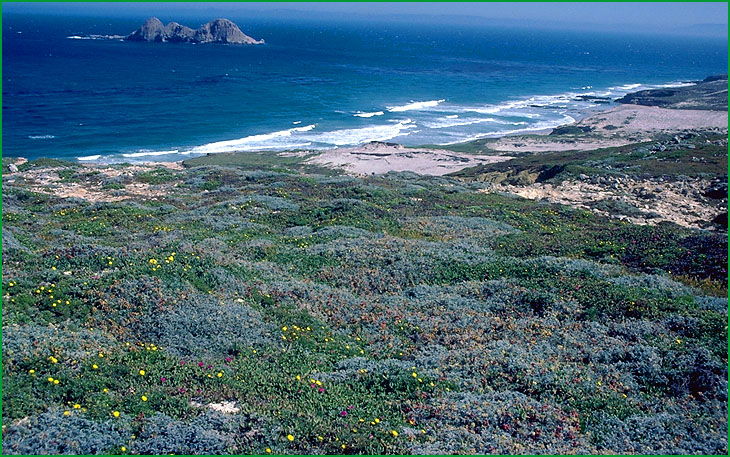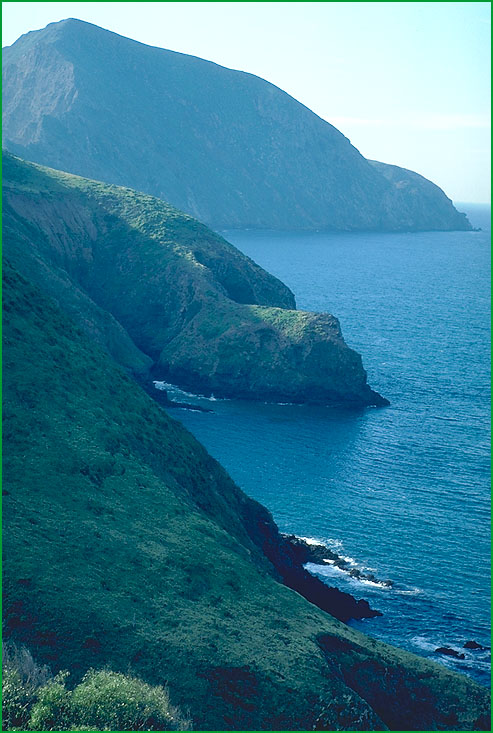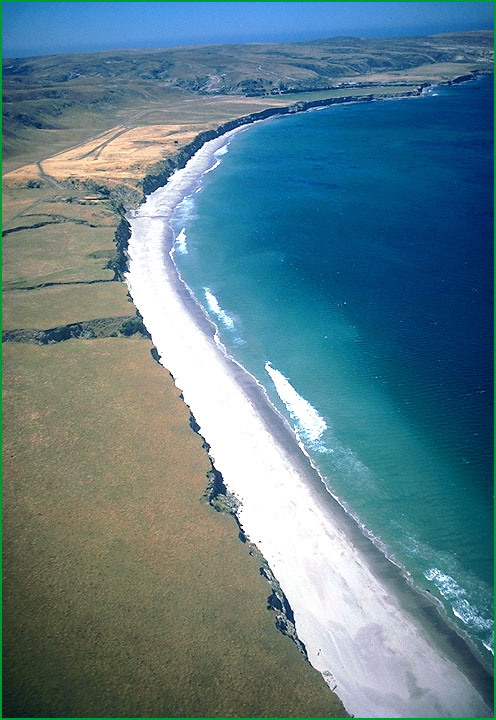 | Northern Channel Islands |
San Miguel Island Ś James R. Nelson |
Anacapa Island Ś James R. Nelson |
San Miguel Island Ś James R. Nelson |
San Miguel Island Ś James R. Nelson |
http://www.fs.fed.us/r5/projects/ecoregions/261bc.htm
Anacapa, Santa Cruz, San Miguel, and Santa Rosa Islands are in this subsection. It has a hot and subhumid climate that is moderated by the ocean. MLRA 20.
Lithology and Stratigraphy. Miocene basalt, andesite, pyroclastic, and marine sedimentary rocks predominate in this subsection. There are small areas of Eocene sedimentary, Mesozoic granitic, and Pre-Cretaceous metamorphic rocks. Some of the islands have extensive Quaternary marine terraces and eolian sand deposits.
Geomorphology. The northern Channel Islands are on a line with the Santa Monica Mountains, which are oriented east-west. They have steep to very steep mountainous topography with gently sloping plateaus and dissected marine terraces. Eolian sand has accumulated on some of the surfaces, especially on San Miguel Island. The subsection elevation range is from sea-level up to about 2450 feet. Mass wasting, fluvial erosion, wave erosion, and eolian erosion and deposition are the main geomorphic processes.
Soils. The soils are mostly Typic Natrustalfs and Psamments. Salts from the ocean accumulate in the soils. The soils are well drained. Soil temperature regimes are mostly isothermic, and some are thermic. Soil moisture regimes are mostly ustic, and some are xeric.
Vegetation. The predominant natural plant communities include Coast live oak series, Needlegrass grasslands, Island oak series, California sagebrush series, Mixed chaparral shrublands, and Coyote brush series. Dunes and adjacent uplands with a cover of eolian sand support a succession of plant communities, from bare dune through Sand-verbena - beach bursage series.
Characteristic series by lifeform include:
Dunelands: Sand-verbena - beach bursage series, Dune lupine - goldenbush series.
Grasslands: California annual grassland series.
Shrublands: Bigpod ceanothus series, Black sage series, California buckwheat series, California sagebrush series, California sagebrush - black sage series, California sagebrush series - California buckwheat series, Chamise series, Chamise - black sage series, Coyote brush series, Mixed sage series, Mixed scrub oak series, Scrub oak series, Scrub oak - chamise series.
Forests and woodlands: Bishop pine series, Coast live oak series, Hollyleaf cherry stands, Island oak series, Catalina ironwood stands, Torrey pine stands.
Climate. The mean annual precipitation is about 12 to 20 inches; it is all rain. Mean annual temperature is about 54░ to 60░ F, with 5 to 10░ F differences between summer and winter means. The mean freeze-free period is 365 days.
Surface Water. Runoff is rapid. There are few streams, especially few in volcanic terrain, and all of them are dry through the summer. Natural lakes are absent.



